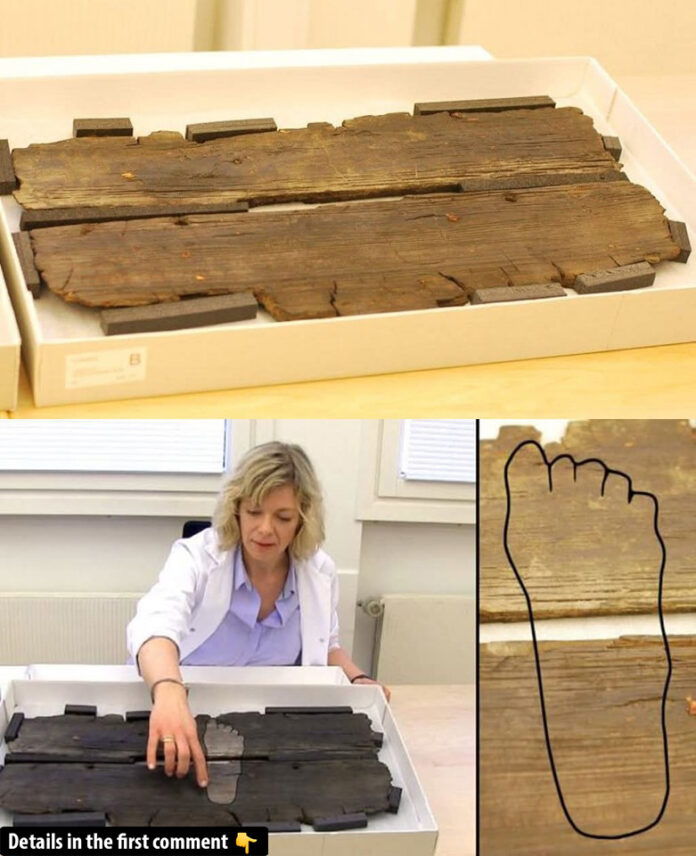The Gokstad ship, a masterpiece of Viking engineering, has fascinated historians and archaeologists since its discovery in 1880. Among its many secrets lies a simple yet captivating detail—a carved outline of a foot on the ship’s wooden deck. This seemingly trivial find offers a rare glimpse into the human lives aboard the ship and the everyday moments that defined the Viking era. Let’s delve into the remarkable story of the Gokstad ship, its discovery, and what the footprints reveal about Viking culture.
The Gokstad Ship: A Marvel of Viking Craftsmanship
Discovery and Excavation
In the late 19th century, two teenage boys on the Gokstad farm in Norway decided to dig into a mound known locally as Kongshaugen, or “The King’s Mound.” What they unearthed was no ordinary burial—beneath the soil lay an elaborate Viking ship grave. Alerted to the find, Nicolay Nicolayse of the Society for the Preservation of Ancient Norwegian Monuments halted the amateur excavation and began a professional dig in 1880.
What emerged was a clinker-built oak ship measuring 76 feet in length and 17 feet in width, with 16 oar holes on each side. The ship was designed for sea voyages, capable of carrying a crew of 70 and featuring a square sail for long journeys. Remarkably, the ship was buried with a royal individual, believed to be Olaf Geirstad-Alf, a king of Vestfold.
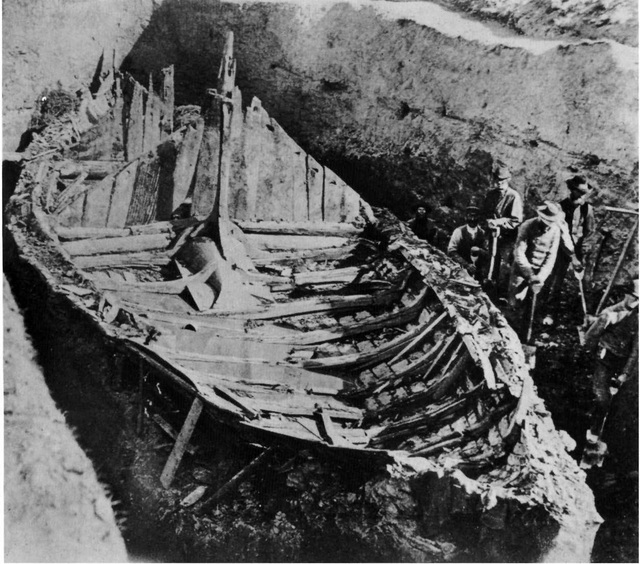
A Royal Burial
The burial chamber, built at the stern, contained a raised bed, fragments of silk, gold-threaded textiles, and the incomplete skeleton of a man in his 40s. Evidence of fatal blows to his leg bones suggested he died in battle, a testament to the violent realities of Viking life. Despite looting that stripped the grave of its most precious items, archaeologists recovered a wealth of artifacts, including furniture, tools, animal remains, and 64 shields.
Discover what made the Viking longship so terrifyingly effective – watch the video to learn about its design and how it revolutionized Viking raids and exploration!
Footprints on the Deck: A Viking’s Quiet Moment
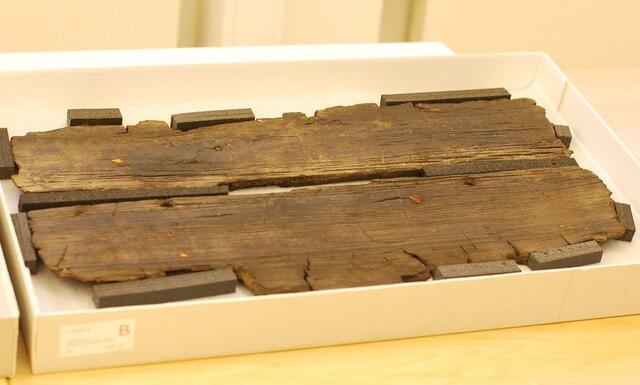
Although the ship and its treasures were meticulously studied for decades, the carved footprints on the ship’s removable pine planks went unnoticed until 2009. During a routine move at the Viking Ship Museum in Oslo, researchers spotted two outlines—a right foot spanning two planks and a weaker left foot on another plank. The carvings were likely made by a bored crew member, possibly a young man, as a personal “I was here” statement.
These carvings humanize the Vikings, often portrayed as fierce warriors and explorers. They suggest moments of leisure amidst the challenges of life at sea. The footprints also highlight the active role of Viking youth, who were treated as adults much earlier than in modern times. These young crew members were integral to the success of long sea voyages, contributing both labor and camaraderie.
The Rich Legacy of the Gokstad Mound
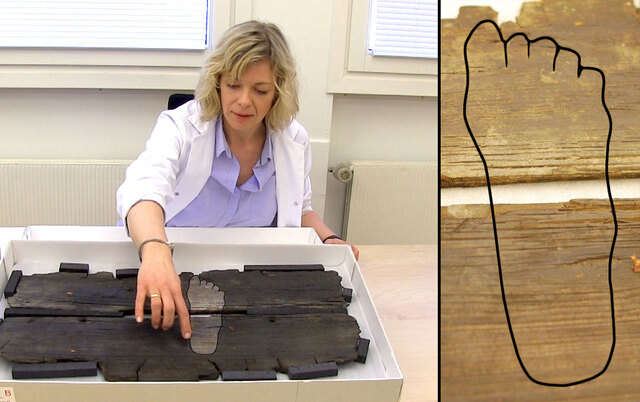
The burial site provided unparalleled insights into Viking culture. Alongside the ship, archaeologists uncovered household items such as fish hooks, kitchen tools, and a game board with horn pieces. The remains of animals, including dogs, horses, and even exotic peacocks, emphasized the wealth and connections of the buried individual. These artifacts paint a vivid picture of daily life, trade, and the spiritual beliefs of the Viking Age.
The Gokstad ship exemplifies the dual role of ships in Viking culture. While essential for exploration, trade, and warfare, they also served as grand ceremonial vessels for burial. The ship’s design reflects the advanced craftsmanship of the Vikings, combining functionality with symbolic significance.
Modern Research: Revisiting the Gokstad Site
Since 2009, researchers have returned to Kongshaugen to reexamine the burial site using modern technologies. These efforts aim to contextualize the Gokstad mound within the broader Viking landscape. By studying nearby structures and artifacts, archaeologists hope to uncover more about the social, economic, and cultural dynamics of the Viking era.
The renewed focus on the Gokstad site seeks to view the burial as a unified monument, encompassing the ship, its contents, and the surrounding landscape. This holistic approach offers a deeper understanding of the intentions behind the burial and the messages the Vikings sought to convey through such elaborate rituals.
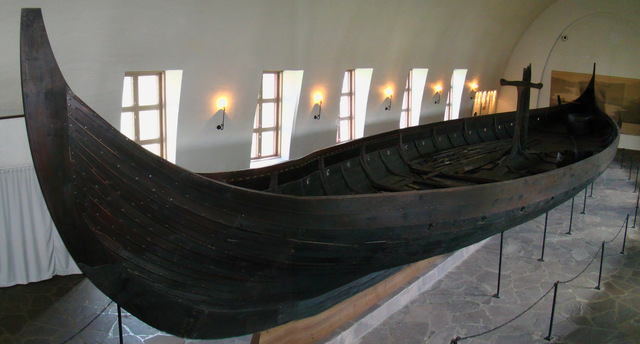
The Human Touch in Viking History
The carved footprints on the Gokstad ship are more than a historical curiosity—they are a bridge to the human experience of the past. They remind us that even amidst the grandeur of royal burials and the daring exploits of sea voyages, the Vikings were individuals with moments of idleness, creativity, and self-expression. These carvings add a personal dimension to the study of Viking history, making it relatable and alive.
Video
Unlock the truth about Vikings through ancient DNA – watch the BBC REEL video to explore how genetic research is reshaping our understanding of Viking history and their origins!
Conclusion
The Gokstad ship stands as a testament to the ingenuity, resilience, and cultural richness of the Viking Age. Its footprints, seemingly insignificant, speak volumes about the everyday lives of the people who sailed aboard it. From its discovery by curious teenagers to its modern-day reexamination, the Gokstad ship continues to captivate and inspire, offering endless insights into the Viking world. As we trace these ancient steps, we are reminded of the enduring connection between past and present, where history becomes a shared human story.
